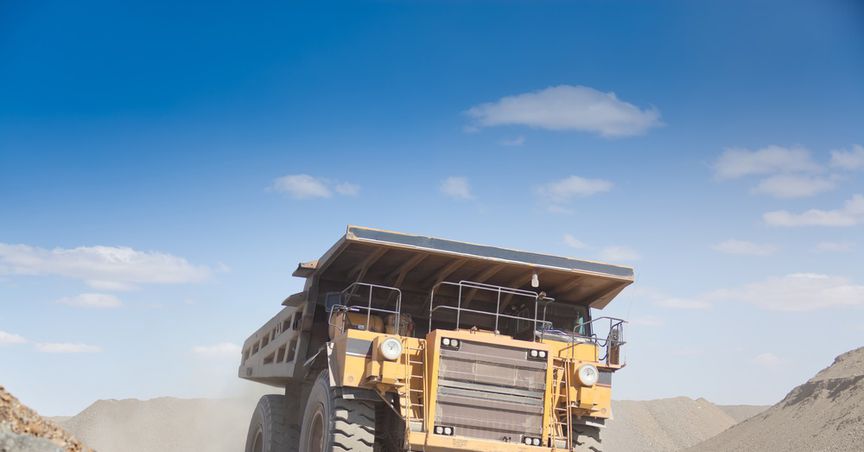Summary
- Metals and mining sector attracts investors as it manages to generate a steady income from its operations.
- Handsome returns on investments and steady dividend distribution make them an attractive investment opportunity.
- The mining industry is highly vulnerable to global economic changes. One should invest carefully by weighing all available information.
Metals and mining industry is massive, and one of the most capital intensive industry. They support the national economy and infrastructure development and also add money to the state coffers. Due to evolving global demand and supply asthmatics, the industry has become highly volatile. The industry is divided into junior and majors. Juniors are riskier investments usually associated with commodities such as natural gas, oil, and minerals, whereas Majors are more secure as they are less volatile and mature. Mostly the capital invested in Majors is used for further exploration.
When the popularity of one commodity fades another commodity soon fills the position. For example, to date, coal has been the highest revenue generating material and is a primary source of generating electricity. But with the changing needs of the environment, it seems renewable energy will soon take its position.
Investors should keep some facts intact before venturing into metals and mining world.
- Geographical Location: Investors should investigate the location of company operations. If the location of the mines is in war-torn countries, there is a pretty good chance investor money may get stuck due to the conflict or war. It has happened in Sudan and South Sudan, where many oil exploration companies operations stopped due to the conflict. Multiple African countries are in the conflict zone.
- Political Situation: Political scenario of a country impacts every industry. If the government is stable and its policies are pro-business and development of the industry, then it will boost the growth of the sector. It is always preferred to operate a business in a democratic country. In a dictatorship, it is easy to make entry into the industry but to operate and to make an exit may become challenging. One such example is Venezuela. The country nationalised all its resources and took over the assets of private players and created an adverse environment for foreign players. The foreign companies had to leave because of the change in policies and touch to operate.
Also read: Brent Crude Tumbles over fears of fresh lockdowns; How are ASX Oil Stocks Trading today
- Short term /long term: Mining industry investment is often taken as a hedge against inflation. Investors who have patience with their money and planning for long term hauls should be the ones investing in mining companies. In simpler terms, investors should put only that money into the mining companies which they can either afford to lose or keep parked for a longer period of time.
- Financial health of the company: The potential investors should carefully evaluate the financial condition of the company. The mining industry is a high capital-intensive industry. It can take several years before the company could taste its first profit. To be an early bird, one should dig deep into the business model of the company. For instance, a company which is into gold mining could liquidate its reserves easily and swiftly than other metals or coal mining company.
- Majors or Juniors: One should know the risk appetite before investing in any mining company. All major companies like BHP, Rio Tinto or Glencore are into mining business for a quite long period and have some of the world’s biggest reserves to their portfolio. They have given steady returns to their investors over the period and enjoy the trusts of their investors. Juniors, on the other hand, have smaller reserves to work with lesser capital. They have high volatility and are subject to higher market risks. The world is not so greener for them during crises like the one we all are facing today- Covid-19.
Also read: How Are Global Crude Oil Giants Responding to the New Normal?
- Commodity: The investors should look onto the commodity portfolio of the company prior to putting their hard-earned money. Base metals are one such essential commodity for developing the country’s infrastructure. They are always in demand and will show steady growth in demand over a period of time. Iron-ore is one such base metal which is required in huge volume all over the world. From infrastructure projects to the auto industry to the construction business, they are in demand and have buyers all-round the globe.
- Commodity grade: Once the investor has chosen the commodity, the next thing is to investigate the quality of the ores. If the ores have a high concentration of the metal then cost of extraction per unit of the metal will be less, and hence profitability will be higher. The investors could understand the point better by taking example from the crude oil industry. The sweet crude or lesser concentration of the sulphur and other impurities fetches a higher price in the international market rather than the heavy crude which require specialise refining units for its treatment.
Also read: US stockpiles Dry up, a big boost for oil prices. Is oil headed higher from here?
- Market: Once the extraction and processing of the commodity are over, it needs to be sold in the market. That market could be a domestic or one could produce in excess and export it to the high demand markets. The investors should look upon the earning source of the company. There is a fairly good chance that a company could be earning more if it has high export orders from its overseas clients. International trade brings in the dollar, which creates an extra source of income through currency exchange.
- Currency Fluctuation: This factor comes into play when the maximum portion the revenue comes from international trade. If the dollar is going strong against the domestic currency, it will impact the revenue and profit of the company.
- Financials: Metals and Mining companies are typicallycapex heavy businesses with long gestation periods. Maintaining cash flow becomes paramount for such businesses. Investors relay on the EBITDA numbers to get a fair idea on the companies operating performance. Also, some consider it as a proxy for cash flow before working capital changes.
EBITDA is one of the non-GAAP matrices used by the mining companies to give a clear picture of the earnings. EBIDTA data is vital as it reflects the actual earnings the company is making prior to recording non-cash depreciation charges. Studying the companies operating parameters is also very essential.
Also read: Saudi and Russia go stern on OPEC+ laggards, Look at ASX Oil players
- Management: A small company could grow and become one of the Majors or the vice versa, depending on how the management is planning to run the organisation. It is important to research the management prior to making investment decisions.
Also read: Vulcan Energy Gains Momentum on ASX With the Appointment of Ex-Tesla Senior Management
- Environment: Climate change has taken a toll on many projects. For instance, most of the countries are trying to reduce their carbon footprint and lower the emission levels. People all around the globe are advocating green energy. Most of the running coal-based power plants will be phased out gradually diminishing the demand for coal. So investors should try to invest in companies which have a sustainable growth model and do not get affected by any change in environmental laws or regulations.





